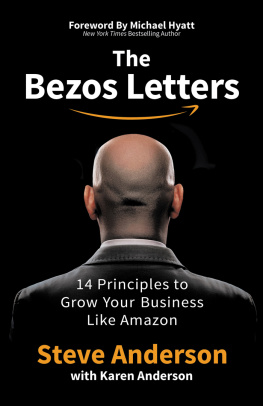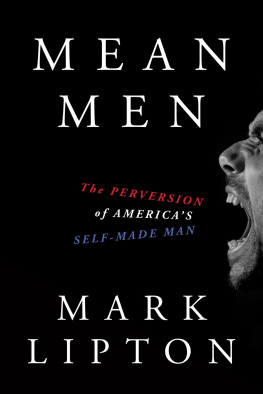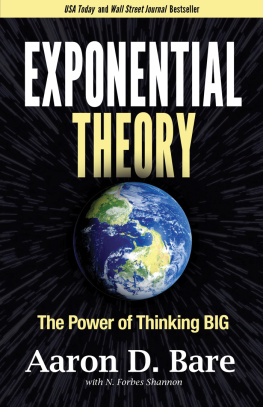HBR Press Quantity Sales Discounts
Harvard Business Review Press titles are available at significant quantity discounts when purchased in bulk for client gifts, sales promotions, and premiums. Special editions, including books with corporate logos, customized covers, and letters from the company or CEO printed in the front matter, as well as excerpts of existing books, can also be created in large quantities for special needs.
For details and discount information for both print and ebook formats, contact .
Copyright 2020 Mark W. Johnson and Josh Suskewicz
All rights reserved
No part of this publication may be reproduced, stored in or introduced into a retrieval system, or transmitted, in any form, or by any means (electronic, mechanical, photocopying, recording, or otherwise), without the prior permission of the publisher. Requests for permission should be directed to , or mailed to Permissions, Harvard Business School Publishing, 60 Harvard Way, Boston, Massachusetts 02163.
The web addresses referenced in this book were live and correct at the time of the books publication but may be subject to change.
Library of Congress Cataloging-in-Publication Data
Names: Johnson, Mark W., author. | Suskewicz, Josh, author.
Title: Lead from the future : how to turn visionary thinking into breakthrough growth / Mark W. Johnson and Josh Suskewicz.
Description: Boston, MA : Harvard Business Review Press, [2020] | Includes index. |
Identifiers: LCCN 2019046716 (print) | LCCN 2019046717 (ebook) | ISBN 9781633697546 (hardcover) | ISBN 9781633697553 (ebook)
Subjects: LCSH: Transformational leadership. | Forecasting. | Creative ability in business. | Success in business.
Classification: LCC HD57.7 .J64375 2020 (print) | LCC HD57.7 (ebook) | DDC 658.4/092dc23
LC record available at https://lccn.loc.gov/2019046716
LC ebook record available at https://lccn.loc.gov/2019046717
Contents
A Tribute to a True Visionary
Clayton M. Christensen (19522020)
As a teacher, collaborator, partner, colleague, role model, and, most important, friend for twenty-five years, Clayton Christensen did more to shape my way of thinking than anyone else. This book would never have come to be without our close and profound association.
For me, Clay embodied what it means to lead from the future. His seminal theory of disruption stems from a fundamental understanding: that when business leaders develop and utilize good theory, their efforts in strategy and innovation (and, indeed, in managing the dynamics of their whole industries) can become much more predictable. I think of the theory that undergirds Lead from the Future in much the same way. Leaders can use it to put themselves in an envisioned future, frame its circumstances as a situation Im in, and then develop clear-eyed views about the most effective ways to innovate within it.
Clay also taught me that the strength of his theories is not simply that they make businesses more predictable, and hence profitable. The nonconsumers that disruptors serve and benefit are often the less fortunate in society. At root, business disruption enables, as Clay put it, a larger population of less-wealthy or less-skilled people to do things for themselves in more convenient, less centralized, less expensive settings. Clay was onto something way ahead of his timethat good business is not just about making more profits for shareholders but serving stakeholders of every kindthat the best-run companies, in the words of the Business Roundtables recent statement on the purpose of a corporation, deliver value to customers, invest in their employees, and support the communities in which they work.
But disruption theory is even more profound than that. Ultimately, it is not just about democratizing products and services but empowering people to grow and flourish. Clays book How Will You Measure Your Life? provides the most fascinating application of its transcendent power as it moves from helping companies to helping individuals achieve better outcomes in their lives and relationships, one by one.
Our present and future are as challenging and indeed as frightening as theyve ever been; we have a desperate need for visionaries. Clay Christensen was such a onea prophet ahead of his time, who mastered the doctrine of management from the future.
I honor his lifes work and dedicate this book to him.
Mark W. Johnson
Belmont, Massachusetts
January 2020
Introduction
LEAD FROM THE FUTURE
Where there is no vision, the people perish.
Proverbs 29:18
Everyone recognizes a great, visionary leader when they see oneat least in retrospect, after their prescient ideas have been borne out by time. In history, Winston Churchill inspired the British in their darkest hour, and Nelson Mandela led the resistance to apartheid from his prison cell on Robben Island. Visionary industrial-age titans like Thomas Edison, Henry Ford, and Kiichiro Toyoda, and, in our own day, Bill Gates, Steve Jobs, and Jeff Bezos recognized the transformative power of new technologies and leveraged them to build vast enterprises that changed whole economies and ways of life. Each of these leaders looked past the conventional wisdom of their day, foresaw a different and better world, and mobilized others to join them in their quests to create it.
Where did their vision come from? By what alchemy, besides sheer force of intellect, personality, and determination, did they bring them to life? Visionary business leaders, we are told, are usually entrepreneurs who build their organizations from scratch; rarely, if ever, are they found at established organizations. Most, we have been led to believe, are creatures we can only admire and never hope to emulate, who are gifted with a mysterious power of second sight that lets them see opportunities where others cannot.
That is not what we think. As business strategists who specialize in helping firms navigate disruptive change and develop future-oriented growth strategies, we have learned that visionaries are simply flesh-and-blood human beings who have figured out how to develop actionable views of their organizations best possible futuresviews that are clear-eyed, inspiring, and granular enough that they can be operationalized, which is to say, directly linked to an explicit strategic path that starts in the here and now. We believe that the ability to develop and then actualize such a vision is a criticalperhaps the criticalexecutive skill, though it is sorely neglected in traditional management doctrine.
When he was a young man, Apples Steve Jobs experimented with LSD and lived in an ashram in India. Were not going to tell you that we have a formula that will allow you to do all the things that he didat the beginning, in that fabled garage in Los Altos, and years later, when he transformed Apple into the giant enterprise that it is today. But we can tell you that you dont have to take mind-altering drugs to become more visionary.
Developing and deploying an inspiring and actionable vision is a skill that can be learned. Beyond that, it can be driven into the cultures of even the most hidebound organizations, reigniting their entrepreneurial fires and infusing them with a renewed sense of purpose and direction.










